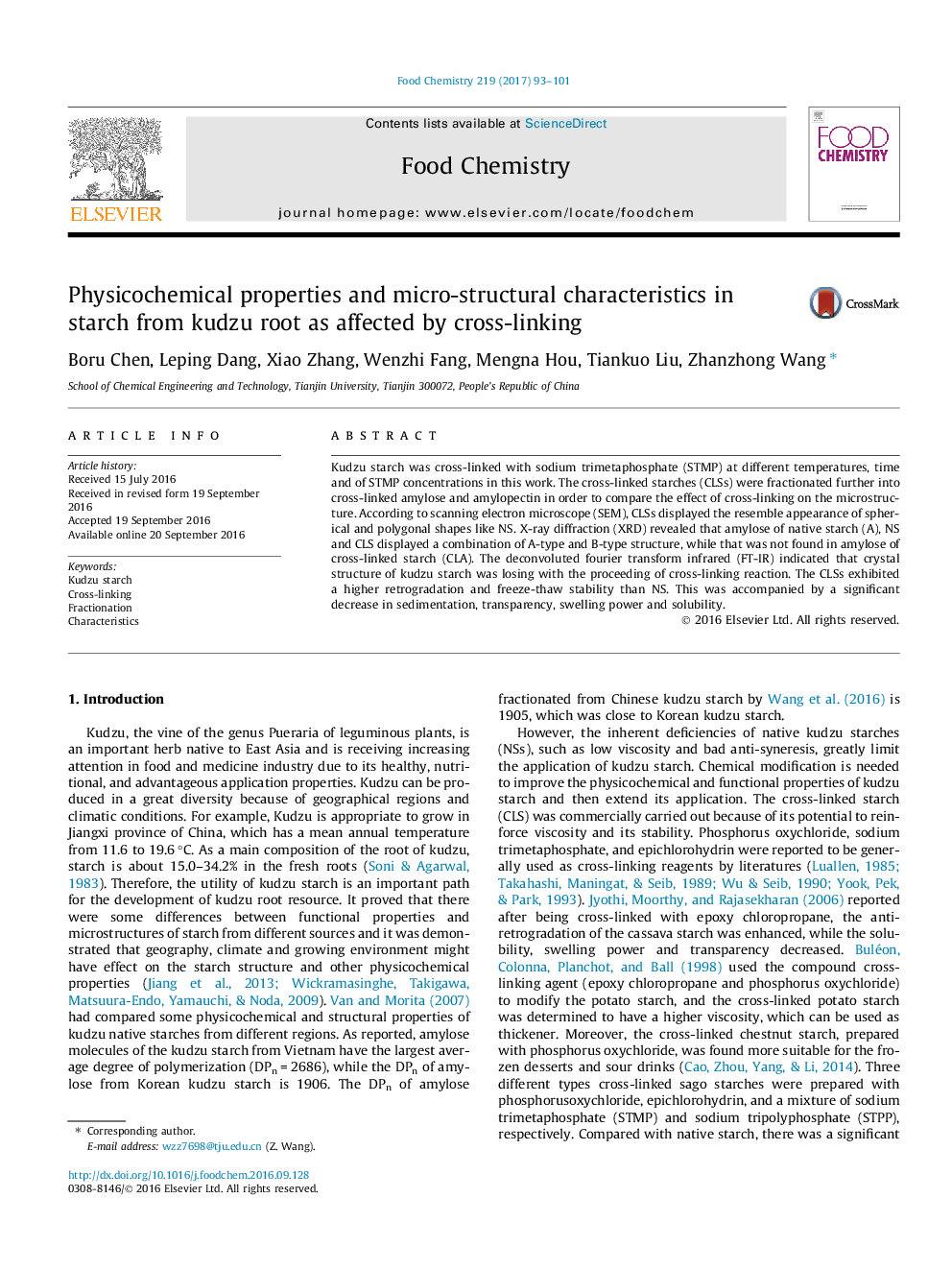| کد مقاله | کد نشریه | سال انتشار | مقاله انگلیسی | نسخه تمام متن |
|---|---|---|---|---|
| 5134128 | 1492073 | 2017 | 9 صفحه PDF | دانلود رایگان |

- Native and cross-linked starch were fractionated into amylose and amylopectin.
- The crystal structure of kudzu starch was losing with cross-linking reaction.
- Different starch products have different structure and physicochemical properties.
- This work would be helpful for practical application of kudzu starch.
Kudzu starch was cross-linked with sodium trimetaphosphate (STMP) at different temperatures, time and of STMP concentrations in this work. The cross-linked starches (CLSs) were fractionated further into cross-linked amylose and amylopectin in order to compare the effect of cross-linking on the microstructure. According to scanning electron microscope (SEM), CLSs displayed the resemble appearance of spherical and polygonal shapes like NS. X-ray diffraction (XRD) revealed that amylose of native starch (A), NS and CLS displayed a combination of A-type and B-type structure, while that was not found in amylose of cross-linked starch (CLA). The deconvoluted fourier transform infrared (FT-IR) indicated that crystal structure of kudzu starch was losing with the proceeding of cross-linking reaction. The CLSs exhibited a higher retrogradation and freeze-thaw stability than NS. This was accompanied by a significant decrease in sedimentation, transparency, swelling power and solubility.
Journal: Food Chemistry - Volume 219, 15 March 2017, Pages 93-101